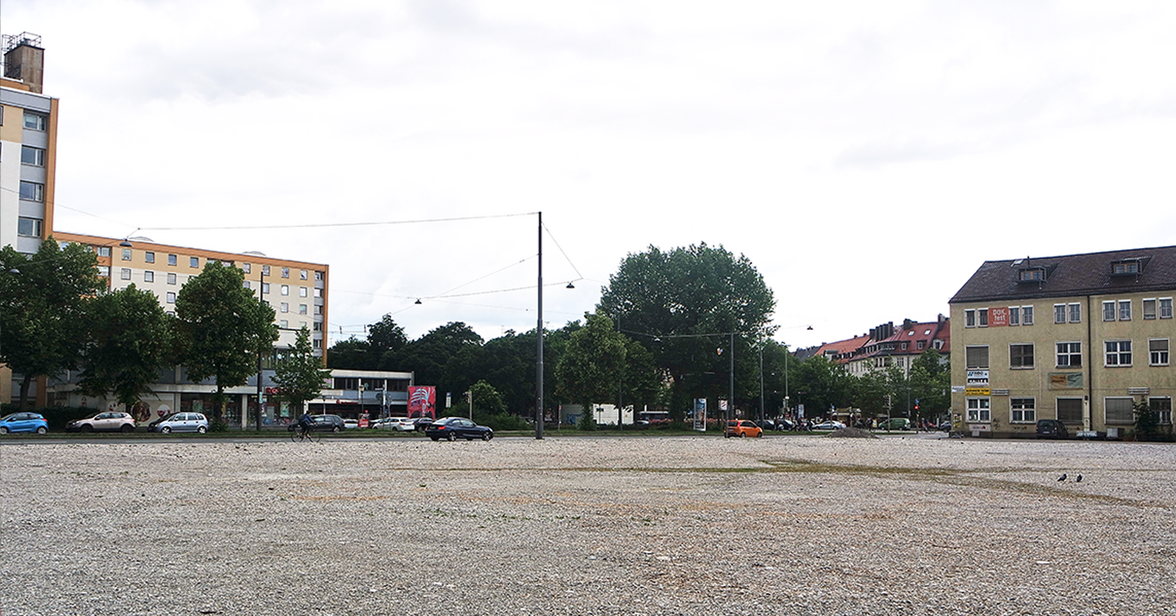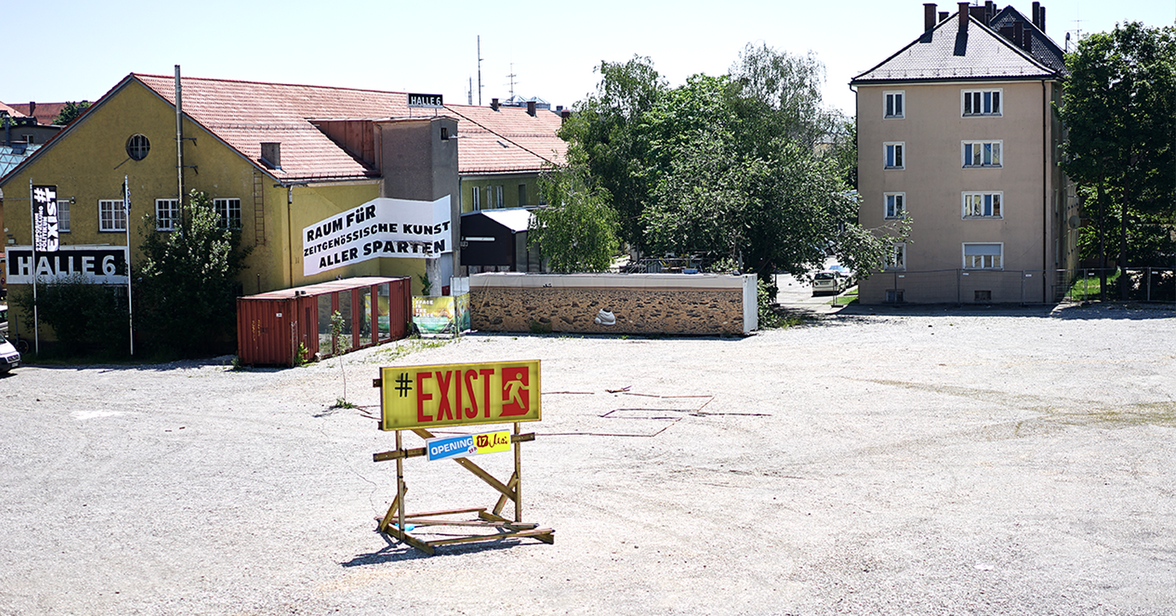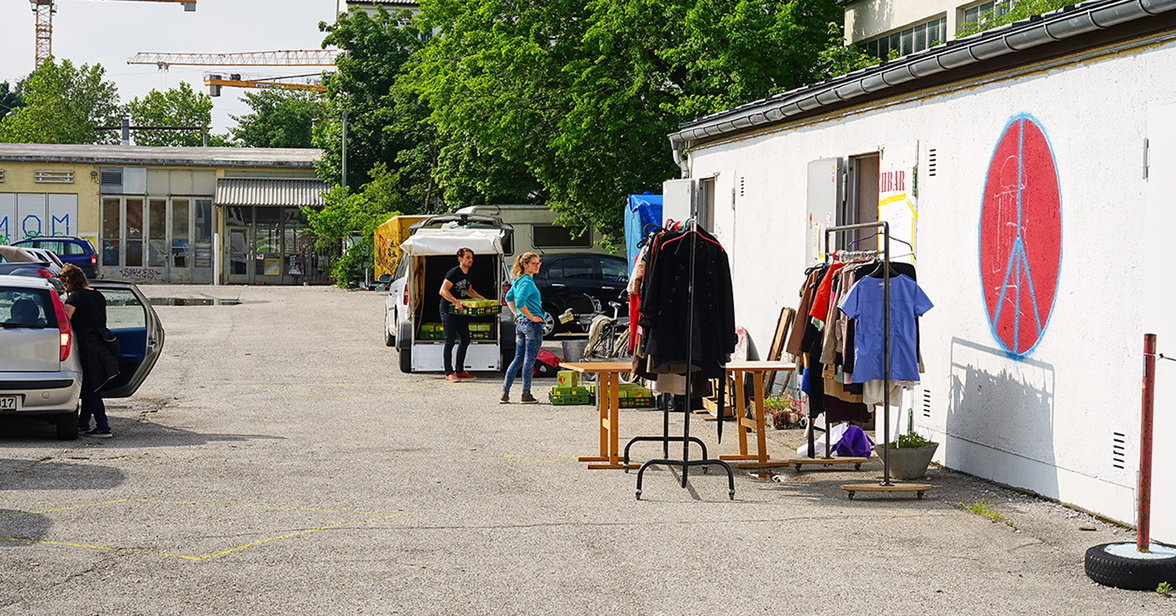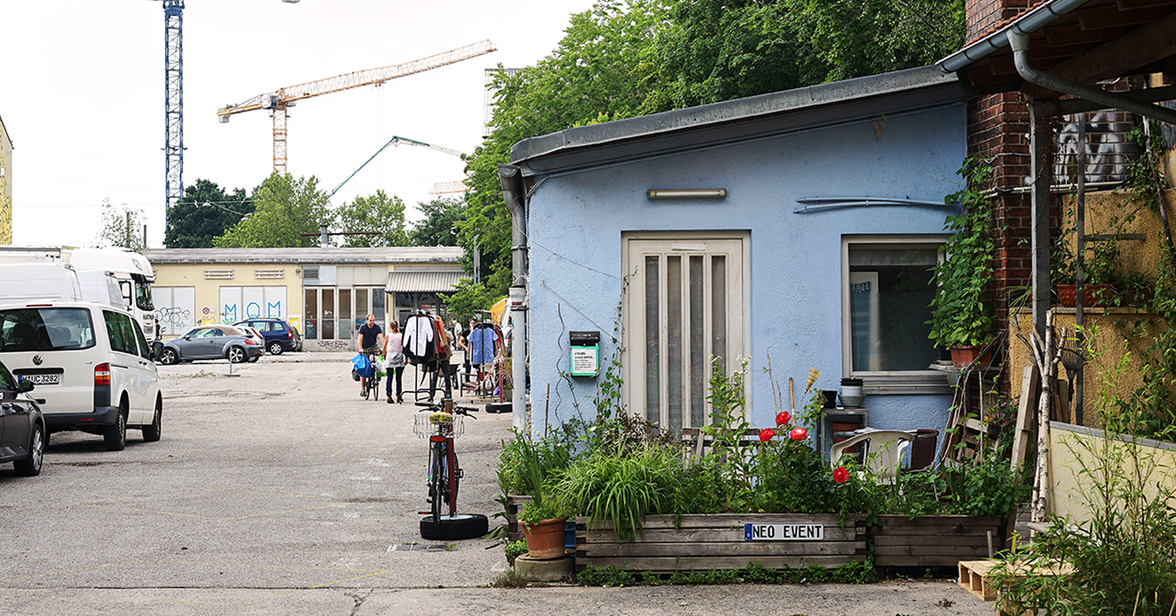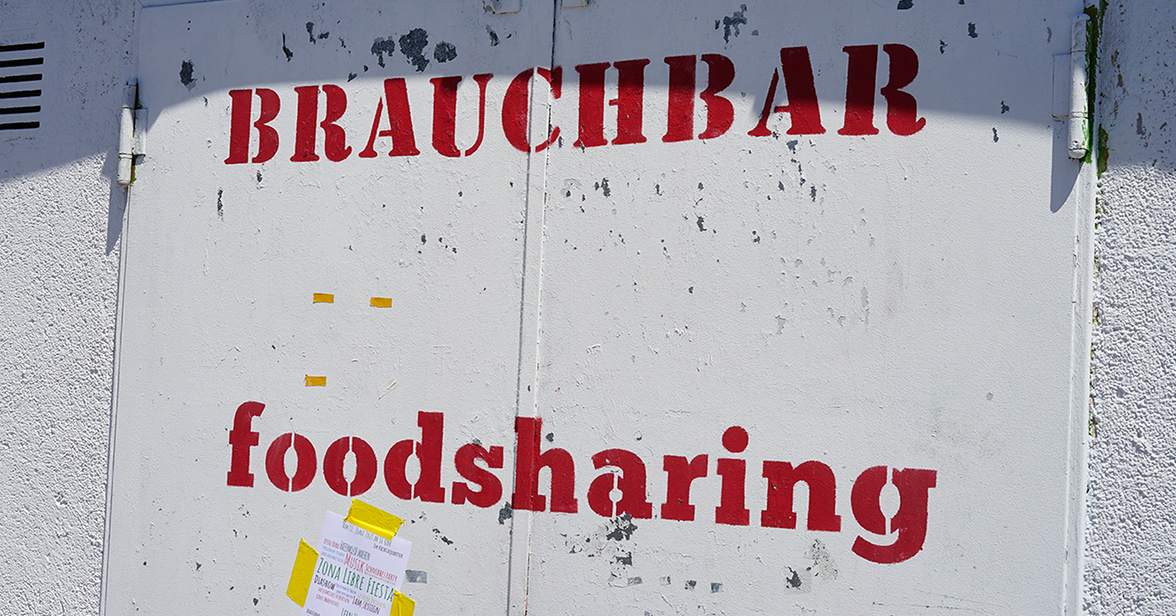Lamentofläche
The area of the demolished Lamentohalle is open for cultural or creative business purposes until a formal interim use begins beforer. 2011. Currently, the space is rented out for events, such as the fairy tale bazaar or a guest circus performance, and is informally appropriated by various initiatives from the creative quarter with installations and actions.
Type
Type of intervention: Installation / Action
Project character: appropriation
Theme: art / waste avoidance / scarcity of space / swapping & sharing
Project Objective: Activation / Catalyst / Occupation
Location
Project location: Munich; Dachauer Straße 112 to 114
Project dimension: 9.000m²
Time
Project period: 2018 to at least 2022
Project duration: at least 4 years
project frequency: permanent
Project timeline: in planning / ongoing
Space
Type of open space: conversion area
Ownership: public land
Accessibility: not restricted
Actors
Client*s: Münchner Gewerbehof- und Technologiezentrumsgesellschaft mbH (MGH) on behalf of the City of Munich // Administration
Creators: halle6, Zona Libre, Wannda e.V., Circus Roncalli // Artists / residents / associations / initiatives / organizers
Project partners: unknown
Other actors: unknown
Funding
(Commissioned) budget: none
Funding: unknown
Own funds: own funds
Planning context ★★★★☆
Spatial planning context:
Buildings are to be constructed on the site of the former Lamentohalle according to the framework planning for the creative quarter by Teleinternetcafe (2012). Since the hall was demolished in 2017, the area lies fallow.
Thematic planning context:
Artists* from the creative quarter repeatedly use the brownfield for artistic interventions, e.g. the installations "Pommesbude" and "Space is the Place" from 2018. Through these actions, the artists* take a stand on relevant issues of urban planning, e.g. the low availability of space and planning uncertainties for artistic activities and studio spaces.
The activities of Zona Libre relate to topics relevant to urban planning, such as regional food production (Solawi Auer Garden), consumption-free living ("brauchbar") or recycling of "waste products" ("foodsharing").
Research sources
Fischer, Eva-Elisabeth (08.05.2018). An end with pain. Süddeutsche Zeitung. www.sueddeutsche.de/kultur/freie-szene-ein-ende-mit-schmerzen-1.3972921, accessed June 10, 2019.
Niesmann, Sonja (02/12/2018). All in one hand. Süddeutsche Zeitung. www.sueddeutsche.de/muenchen/neuhausen-alles-in-einer-hand-1.3864345, accessed June 10, 2019.
HALLO muenchen (May 03, 2019). Creative lab at Leonrodplatz - Colorful patchwork facade planned. www.hallo-muenchen.de/muenchen/west/neuhausen-nymphenburg-ort43338/muenchenneuhausen-kreativlabor-leonrodplatz-bunte-patchwork-fassade-geplant-12236697.html, accessed June 10, 2019.
State Capital Munich (April 24, 2018). Information event on interim use on the Lamento site. Department of Urban Planning and Building Regulations. www.muenchen.de/rathaus/Stadtverwaltung/Referat-fuer-Stadtplanung-und-Bauordnung/Projekte/Dachauerstrasse-Werkstattgespraech.html, accessed June 10, 2019.
State Capital Munich (June 17, 2015). Kreativquartier an der Dachauer Straße/Schwere-Reiter-Straße, preliminary sheet to the resolution of the Committee for Urban Planning and Building Regulations. Department of Urban Planning and Building Regulations. www.ris-muenchen.de/RII/RII/DOK/SITZUNGSVORLAGE/3681429.pdf, accessed June 14, 2019.
Zona Libre (2019). www.facebook.com/zonalibremuenchen/, accessed June 15, 2019.
Personal interview with Alexander Geis on 05/24/2019.
Authors
Gero Engeser, Robert Rothe
Photographers
Gero Engeser, TUM, 2019
Editorial revision
Johann-Christian Hannemann, Felix Lüdicke, Julia Treichel
Publication/Status
20.06.2019
